You’re In Good Hands At San Francisco’s Omakase
Chef Jackson Yu hails from Beijing. As such, he knows how to cook Chinese food. But he decided long ago to ply his skills in a much different cuisine: sushi.
“I like to do Japanese food,” he explains. “It’s more of an art.”
Indeed it is, especially at his two-month-old Omakase in San Francisco’s South of Market neighborhood, not far from AT&T Park.
The restaurant’s name refers to the Japanese phrase “to entrust yourself to the chef,” meaning, just sit back and allow the chef to feed you whatever he/she deems is best that day.
At Omakase, you are definitely in fine hands when you do that, as I found out when I was invited in as a guest of the restaurant recently.
You enter into a small foyer. On the right is Origami Market (set to open this week). Just like Omakase, it’s owned by restaurateur Kash Feng, who started up Live Sushi Bar in San Francisco. It will feature more casual fare such as poke, steamed dumplings and noodle bowls — all highlighting local, organic and sustainable when possible.
But you are there for Omakase, so you are are escorted to the sushi bar on the left side, which is all of 14 seats. Behind the bar is Yu, who trained in the Bay Area and in Ginza, Japan; along with two other sushi chefs, Ingi Son, who has worked in Japanese restaurants from New York to Las Vegas to Napa; and Yoshihito Yoshimoto, a native of Osaka with more than 37 years of restaurant experience.
That’s practically one chef for every four diners. Not to mention, there are also kimono-clad servers who bring beverages and other dishes. You are definitely not ignored here, but waited on rather felicitously.
Choose from three prix-fixe menus: $100, $150 or $200, much of it consisting of fresh fish flown in three times a week from Japan’s famed Tsukiji Fish Market in Tokyo.
Since I was a guest of the restaurant, Chef Yu pre-selected for me the $150 menu, which according to the menu description, consists of: 2 appetizers, 1 sashimi, 1 yakimono (grilled item), 12 pieces nigiri, and 1 owan (bowl dish).
The matter-of-fact description doesn’t do justice to what you will receive. It’s a substantial amount of food. You will not leave hungry.
For the ladies, there is a nice touch — instead of having to place your purse directly on the floor (since you are sitting at a narrow bar), you are offered an open-topped wooden box to hold it, which slips underneath the bar out of the way.
When you sit down, you also are offered a glass of Krug Champagne to set the mood. You’re asked about any allergies or dislikes before the show begins. It is a show in a way because you get to watch the sushi chefs make most everything right in front of you, wielding slender steel knives and blow torches at times.
Knobby wasabi roots are propped nearby. No fake green-tinted horseradish paste here, only the real-deal rhizome with its floral quality and its gentler heat that dissipates much faster on the palate.
On this evening, the first bite was a nubbin of raw sea bream alongside a charcoal-hued vessel of white fish salad with tomato hidden underneath a tangle of seaweed and dressed with yuzo koshu (fermented yuzu peel with chili).
My dining companion Donna and I enjoyed it with sips of a dangerously smooth, wonderfully floral Ginjo sake served in Kyoto-crafted pewter cups that went down ever so easily.
Up next was a dish akin to fish aspic — anago in gelatin. The delicate fish was encased in a transparent jelly that added texture and a delicious chill. Pickled cucumbers and a dash of vinegar rounded it out.
A sashimi trio brought forth East Coast orange clam with a crisp texture similar to abalone, Spanish blue fin tuna that was rich and meaty, and striped bass from Japan.
Before the parade of nigiri starts, you’re handed hot towels for your hands, since you can choose to eat each piece either with your fingers or chopsticks. Two different types of ginger are also set on your plate. One is the perky sweet pickled ginger already known and loved; the other is young ginger that’s been preserved with salt.
Chef Yu gently places each piece of nigiri in front of you right after he assembles it. You notice that the rice is room temperature, not too wet, not too dry or hard, but just right. Plus, the mounds of rice are dainty, not nearly so large as on more pedestrian versions. Because you get only one piece at a time, it almost forces you to slow down, savor and really appreciate each bite — not like when you go to an all-you-can-eat sushi restaurant and just hoover it down.
Mild tasting, firm-fleshed young Amberjack starts things off. Then, blue fin medium toro with its fatty finish, followed by clean-tasting baby sea bream.
Next comes what Yu describes as a fish more expensive than blue fin — if that’s possible — that comes from Japan. Akamatsu is about $50 per pound before being filleted; after it’s trimmed, it’s a $80 per pound. Known as variously as white tuna, black throat sea perch or even “white toro,” it is first lightly torched before being presented, leaving it faintly smoky. It’s a nice complement to the sweet, lush fish.
It’s followed by one of my favorites, Hokkaido scallop, its creamy, sweet flesh garnished with smoked sea salt.
Japanese sardine with grated radish on top has the texture of unagi and a surprisingly mild taste.
Then, it’s on to the grilled dish. In this case, it’s black cod grilled with yuzu. A slender pickled ginger root lays over the top that you’re encouraged to chew on. The fatty, smoky fish just about melts in your mouth. It’s served on a unique fan-shaped plate that was made 100 years ago in Japan, and purchased from an antiques store. When the server describes the plate solemnly, you can almost hear each guest gasp and pull away ever so slightly from the bar, lest they be that person who breaks one.
Golden Eye snapper flecked with grains of kombu salt has its skin seared, creating a mouthful that’s smoky, earthy and all together tasty.
Line-caught Japanese Horse Mackerel sports ground ginger on top. It’s a stronger tasting fish but the ginger helps balance it out. It’s shimmery skin looks almost like silver leaf.
Otoro is the prized fatty underside of the blue fin. This is one to really appreciate, as its richness fairly coats your entire mouth.
It’s hard to beat that. But a dual preparation of uni just might. Hokkaido uni is cured while Mendocino uni is left in its natural state. With plump salmon eggs and a hidden layer of rice, this is a super sexy dish — mesmerizing to look at and sinful to dig into with the sweet, ethereal creaminess of the local uni and the more custardy, briny Japanese one.
More richness arrives in the guise of monkfish liver — the foie of the sea. Cooked in mirin, it has a subtle sweetness and an effortlessly smooth texture.
A tiny morsel of conger eel has flaky flesh like fish. A tall wedge of omelet is soft, eggy and barely sweet.
Then, an iron-bowl set arrives. In the larger one, a prawn perches in a pool of red miso soup. Finely diced mitsuba — Japanese parsley– accentuates the deeply savory broth. You pour a little into the smaller bowl to drink, then use your fingers to tear into the prawn, not forgetting to suck on the head, of course.
That is your final bite. There is no dessert served. You may have expected something sugary, but you’re left simply with the lingering sweet taste of this very intimate and personal dining experience instead.
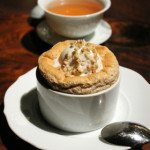 More SOMA Eats: Saison
More SOMA Eats: Saison
And: Cockscomb
And: Spice Kit
And: The Fly Trap

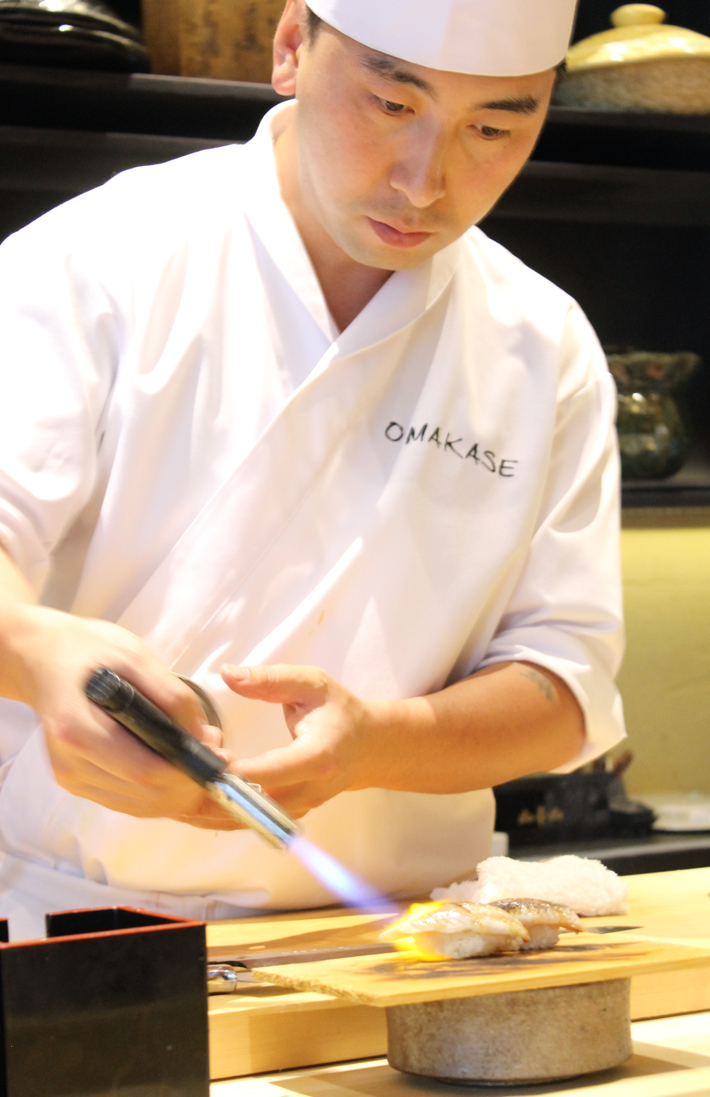
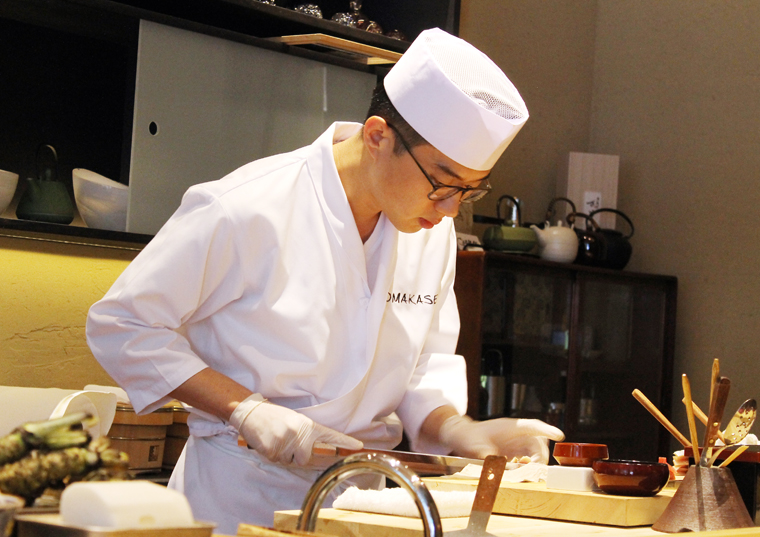
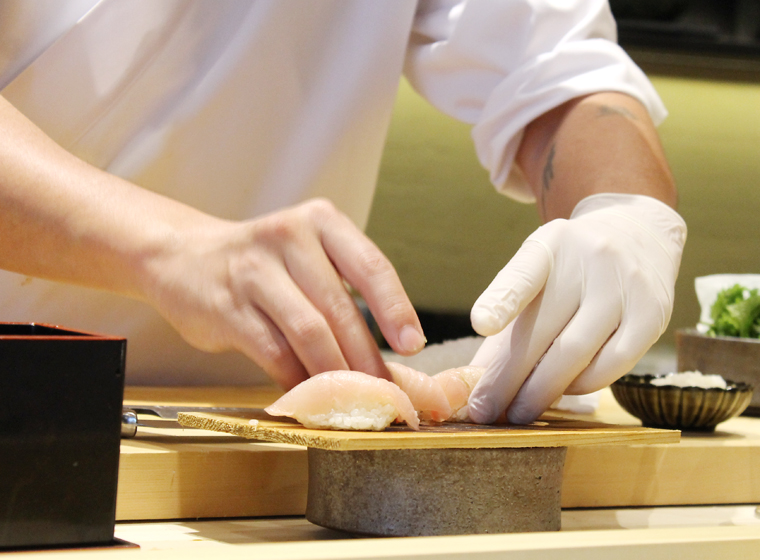
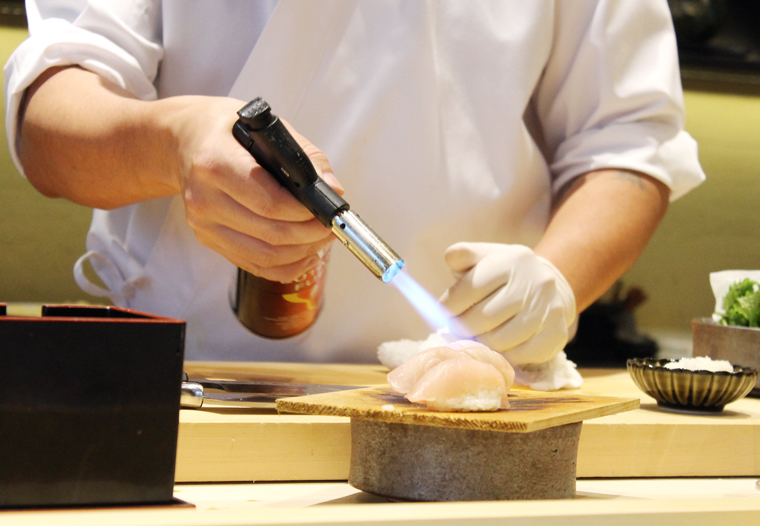
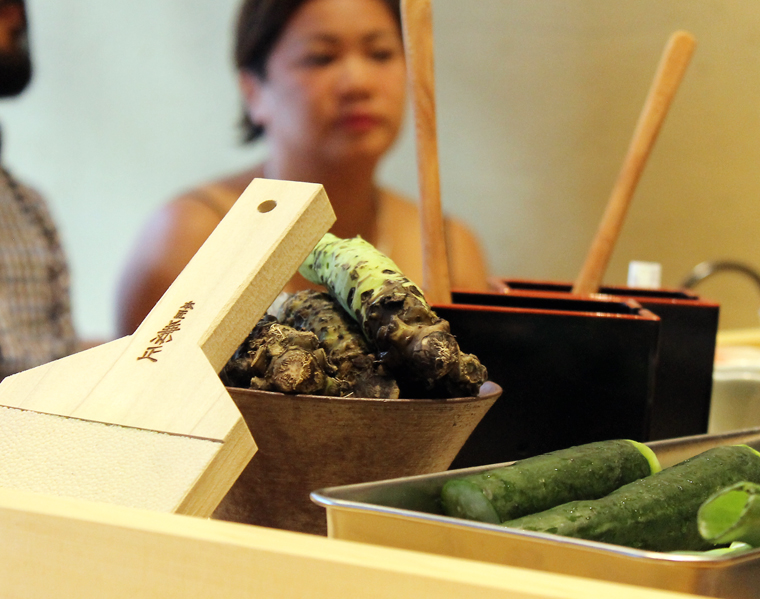


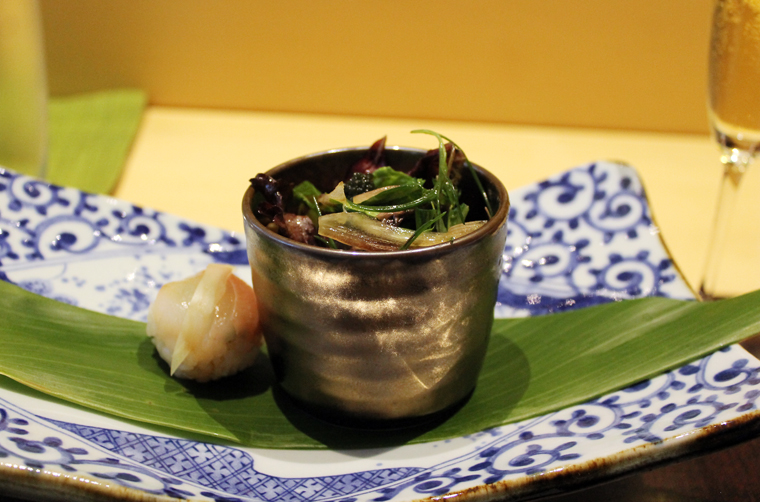
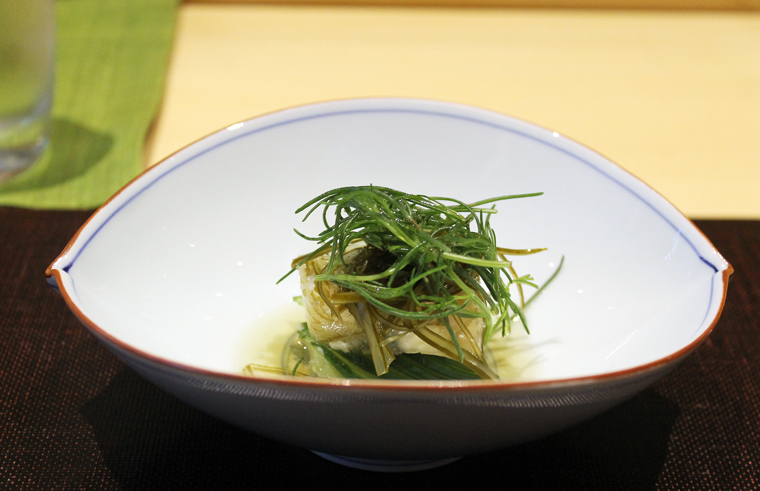
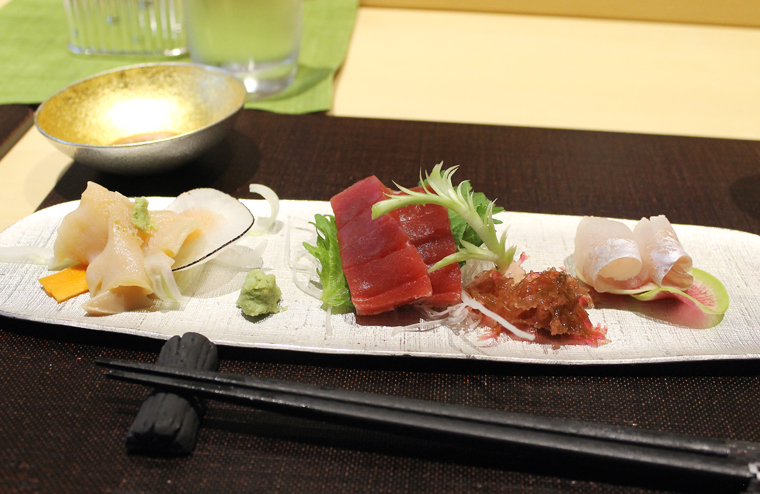
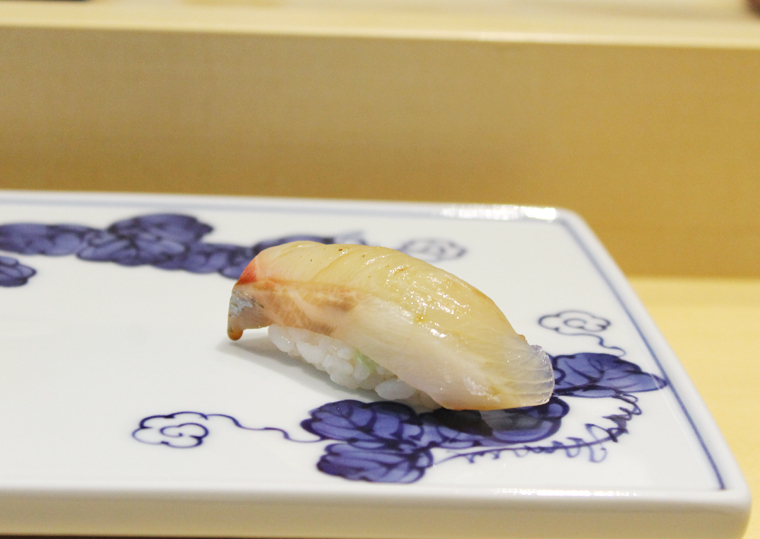
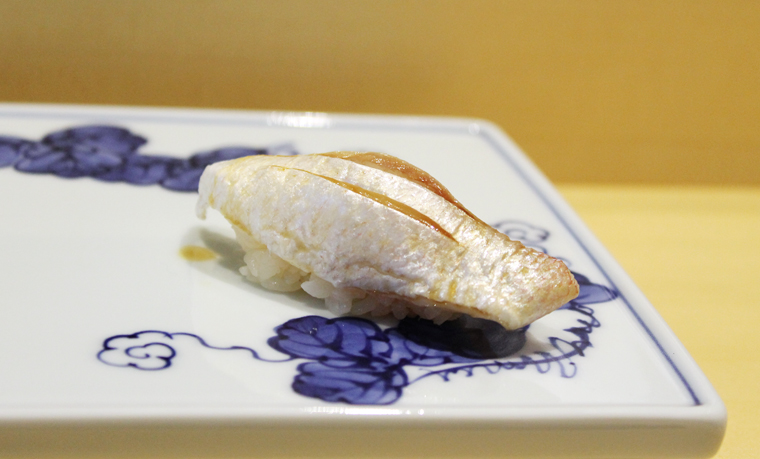
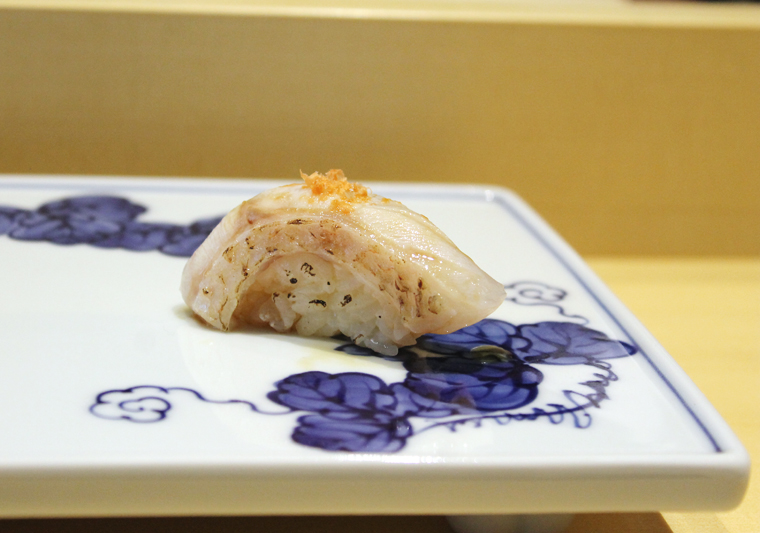
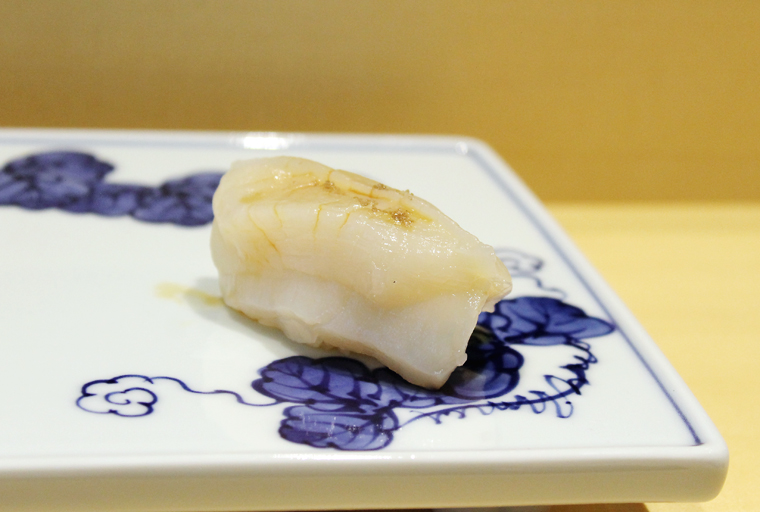
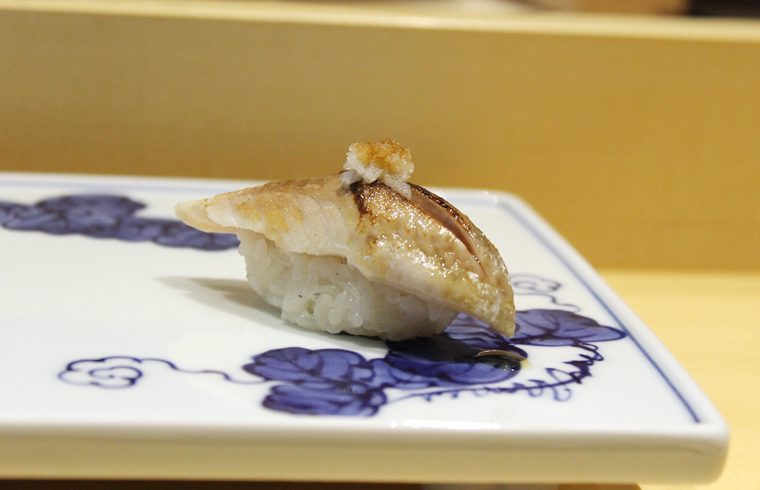
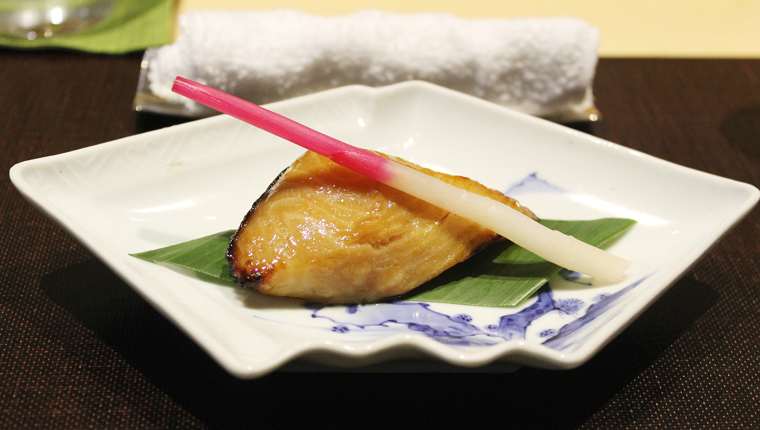
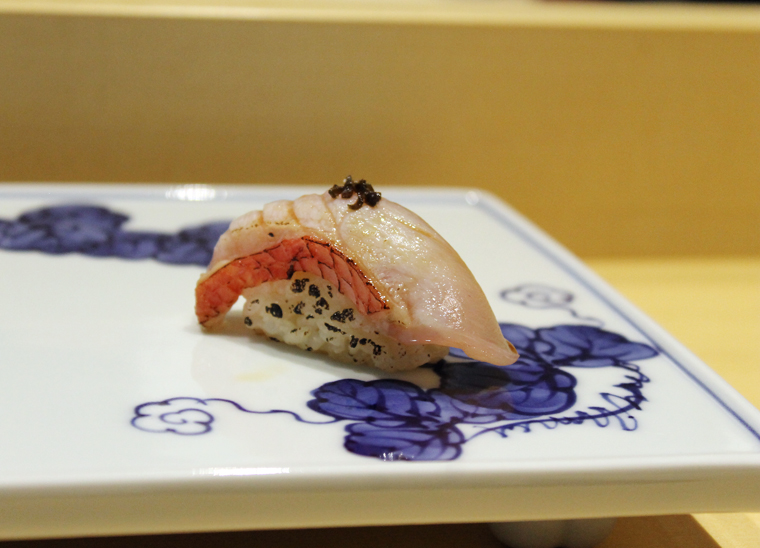
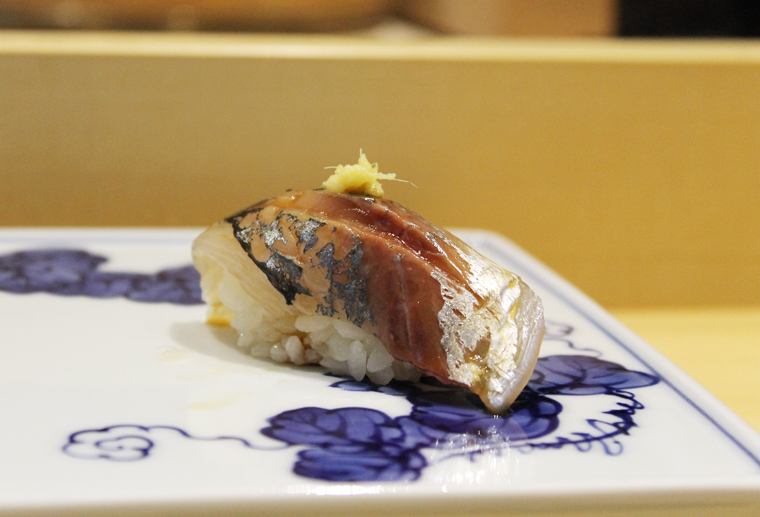
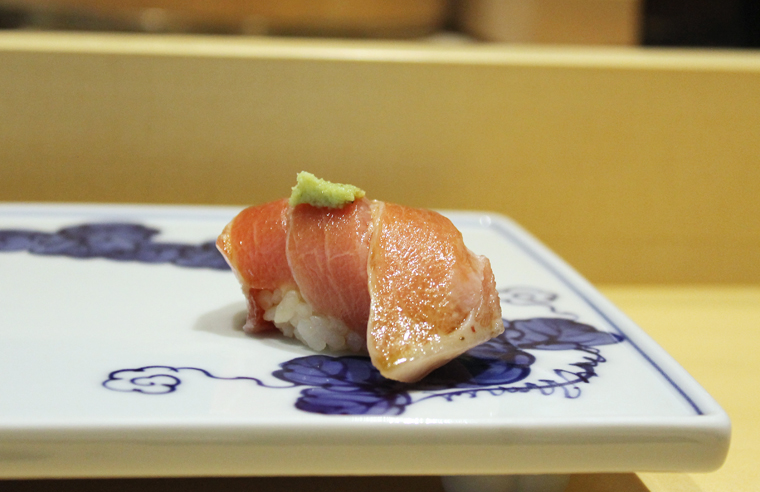
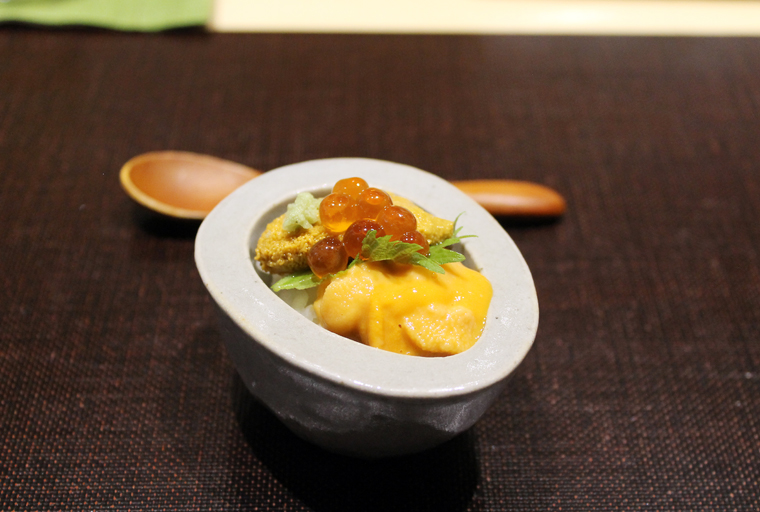
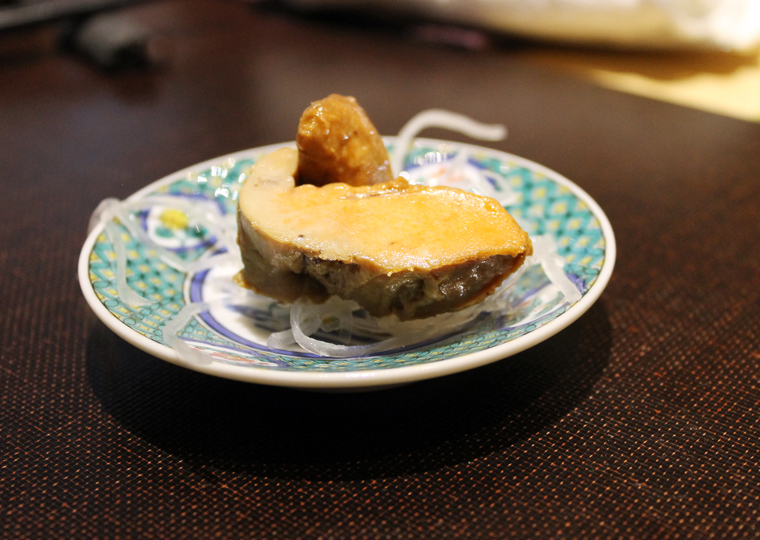
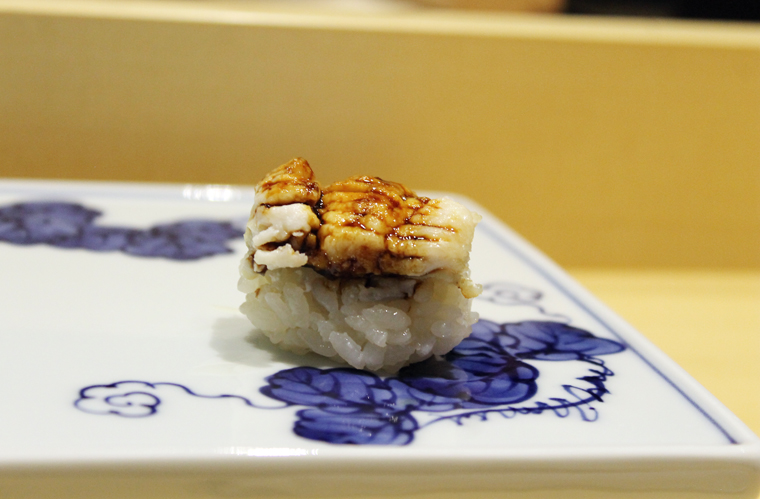
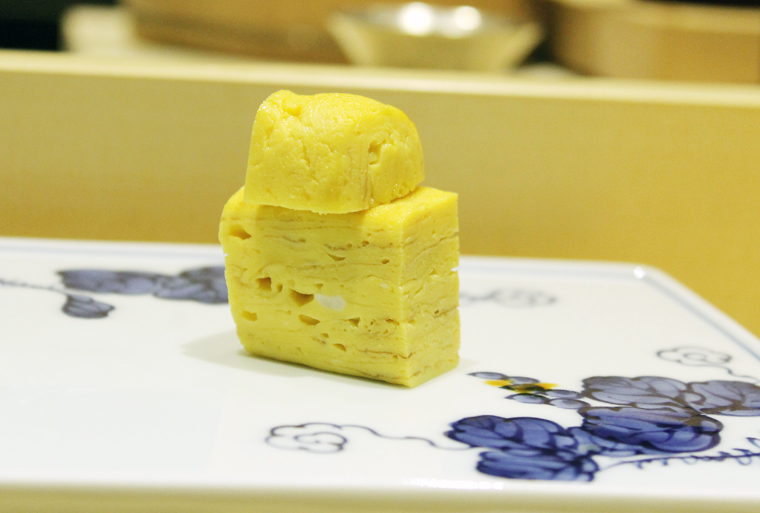
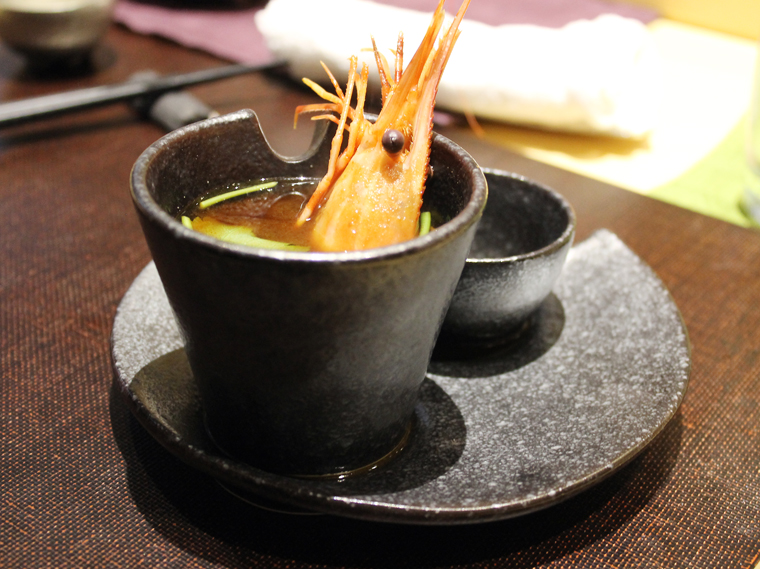


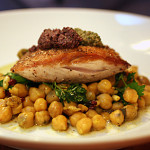

Gorgeous meal, but you’d expect that intimacy from some place called Omakase. Looks like a special treat (especially at those price points).
Man, what an exquisite dining experience! My mouth was watering at all of the delicious photos.
Brings back memories of sushi in Japan. Glad to see more high end sushi/omakase in SF!
Love your photos! Great review. We just went tonight and it was a lovely evening. Just to let you know, your first photo is of Jackson Yu not Justin Yu.
Kelley: Thanks for the typo alert. I just fixed it. Glad you loved Omakase so much. It really is impressive.